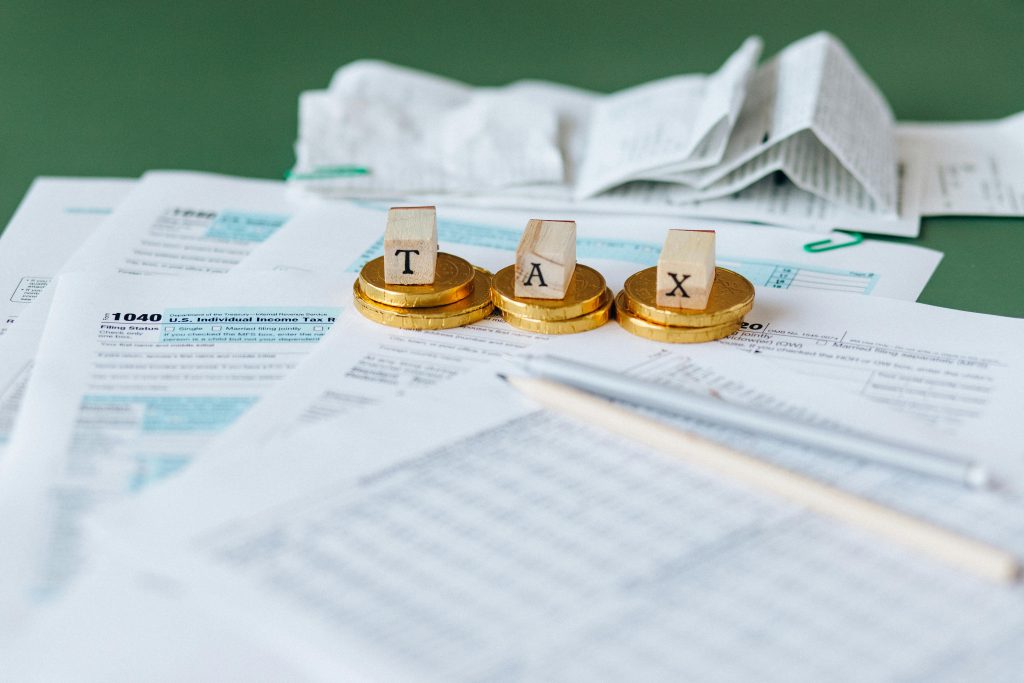
The Link Between Income Tax and Provisional
Income Tax in a Nutshell
Income tax is simply a tax on your taxable income. Your taxable income is your gross income (everything you earned) minus any allowable deductions and exemptions.
By Gerty Green
Income tax and provisional tax go hand-in-hand. Consider income tax as the total amount you owe based on what you earned, and provisional tax is used to pay that amount in chunks throughout the year. This system helps taxpayers avoid an overwhelming lump sum at the end of the year. Let’s break down how the two are connected and why it’s essential to understand how they work.
Income Tax in a Nutshell
Income tax is simply a tax on your taxable income. Your taxable income is your gross income (everything you earned) minus any allowable deductions and exemptions.
Examples of Taxable Income:
- Your salary or wages
- Rental income from properties
- Business profits if you’re self-employed
- Interest and investment income (like dividends)
Income tax is calculated annually, but instead of waiting until the end of the tax year to settle, some taxpayers must make payments throughout the year—this is where provisional tax comes in.
What Is Provisional Tax?
Provisional tax is not a separate tax—it’s a payment system designed to spread your income tax payments across the year. Instead of paying one large amount at the end of the tax year, you make two (or sometimes three) payments during the year based on your estimated taxable income.
Who Needs to Pay Provisional Tax?
- Freelancers, landlords, investors, and business owners who don’t receive a regular salary taxed through PAYE (Pay-As-You-Earn).
- Companies (all must register as provisional taxpayers).
- Individuals earning more than R30,000 per year in interest, rental income, or any other income outside of their salary.
If you’re an employee earning only a salary, PAYE likely covers your income tax, so you won’t need to register as a provisional taxpayer. However, if you earn additional income—like from a rental property—you may need to register and make provisional payments for that extra income.
When Do You Pay Provisional Tax?
Provisional taxpayers make two main payments, with an optional third payment if necessary:
- First Payment (by 31 August): 50% of your estimated annual tax liability.
- Second Payment (by 28/29 February): The total payments at this stage should cover 100% of your estimated annual liability.
- Optional Third Payment (by 30 September): If your estimate was too low, you can make an additional payment to avoid interest charges on the shortfall.
Important note: These dates assume your tax year ends in February, which is the case for most individuals and small businesses.
How Provisional Tax and Income Tax Are Linked
Provisional tax is really just a way to pre-pay your income tax during the year. Here’s how the process works:
1. Tax Reconciliation at Year-End
After the tax year ends, you’ll submit your annual income tax return:
- SARS will calculate your final income tax based on your actual taxable income.
- Your provisional payments will be credited against your final tax amount.
2. What Happens Next:
- If your payments exceed your final tax liability: You’ll get a refund from SARS.
- If your payments fall short: You’ll need to pay the balance.
Example: How Provisional Tax Works in Practice
John’s Story:
- John is a business owner.
- His estimated taxable income for the 2024/2025 tax year is R1,200,000, and his estimated income tax liability is R340,000.
John’s Provisional Tax Payments:
- First Payment (31 August 2024):
John pays R170,000 (50% of his R340,000 liability). - Second Payment (28 February 2025):
John pays another R170,000 to bring his total to 100% of his estimated tax liability. - Final Income Tax Return (after February 2025):
When John submits his return, he realizes his actual income was R1,300,000, not R1,200,000. His actual tax liability is R370,000.- Provisional tax paid: R340,000.
- Final tax liability: R370,000.
- Shortfall: John owes SARS R30,000.
John can make a third payment by 30 September to avoid interest on this amount.
Key Compliance Rules for Provisional Tax
The Fourth Schedule of the Income Tax Act governs the rules for provisional tax. Here are some important things to keep in mind:
- Under-Estimation Penalty: SARS may impose a penalty if your estimated income is significantly lower than your actual income.
- Late Payment Penalty: A 10% penalty is applied to late payments, plus interest on the unpaid amount.
Why Provisional Tax Matters
Provisional tax may sound like extra admin, but it is crucial in helping you stay on top of your tax obligations. Here’s why it’s important:
- Avoid Large Year-End Payments: Provisional tax helps you manage your cash flow by spreading tax payments yearly.
- Consistent Revenue for SARS: It ensures SARS receives tax payments throughout the year rather than waiting for year-end payments.
- PAYE Exemptions: If you only earn a salary subject to PAYE, you likely don’t need to worry about provisional tax—unless you have additional income from other sources.
Key Takeaways
- Provisional tax isn’t a separate tax—it’s a system for making early payments toward your final income tax bill.
- Provisional taxpayers make two main payments during the year, with an optional third payment if needed.
- Making accurate income estimates is important to avoid penalties.
- Employees on PAYE generally don’t need to register for provisional tax unless they earn extra non-salary income.
Understanding how provisional tax and income tax fit together can help you avoid any nasty surprises at the end of the year. You can reduce stress, manage your cash flow, and avoid unnecessary penalties by staying informed and making timely payments. Plus, you’ll avoid a hefty year-end bill that could throw your finances off track.
